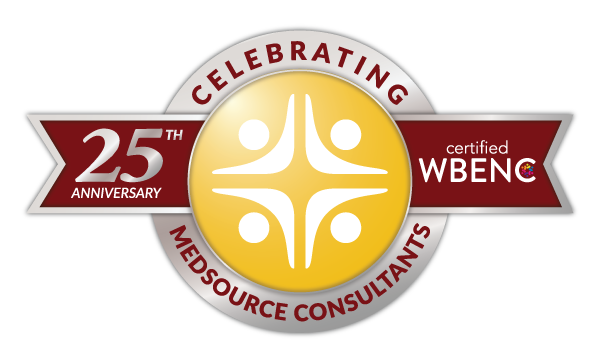Going Out of Business: Healthcare Bankruptcies and Financial Concerns on the Rise and Growing
Dawn Pascale

Last year healthcare bankruptcy filings more than tripled according to data compiled by Bloomberg. The rate of bankruptcies for companies worth more than $1 million in assets also reached a record high.
Since January 1, 2018, the healthcare industry has seen five hospitals file for bankruptcy protection or close: the Miami Medical Center; Baylor Scott and White Medical Center (Garland, TX); Iron County Medical Center (Pilot Knob, MO); Affinity Medical Center (Massillon, OH); and Surprise Valley Hospital (Cedarville, CA).
As the healthcare industry suffers more bankruptcies and closures, what is influencing this disturbing trend?
A Prescription for Disaster: High-Deductible Health Plans, Judicial Rulings, and Hurricanes
High deductible health plans, which have skyrocketed due to the number of employers offering them, has added a debt burden not only to patients but healthcare systems. Per the CDC, “nearly 40 percent of US adults have high-deductible health plans.” These plans cause many patients to find themselves with massive, unpayable debt, sometimes in the triple or quadruple-digits, especially in comparison to their savings and income. While patients are dealing with out of control medical debt, it adds a burden on the healthcare systems which treat them, often resulting in uncompensated care.
For example, Advocate Health Care, one of Illinois’ largest hospital networks, “saw its uncollectible accounts increase more than 22 percent in 2016, to $269.5 million or about 5 percent of its overall revenue.” Per David Szandzik, vice president of revenue cycle for Downers Grove-based Advocate this “spike is related to an increase in deductibles and overall patient financial responsibility under today’s insurance plans.”
This uncompensated care, linked to patients with high deductible health plans, adds further stress to healthcare systems which are already trying to manage compromised budgets.
In addition to dealing with the implications of patients with high deductible health plans, health systems must also handle policy changes and judicial rulings that cut into their budgets. In December 2017, a federal judge dismissed an injunction requested by hospital groups and healthcare systems to block payment cuts for drugs purchased through the 340B Drug Pricing Program. This cut would reduce Medicare payments to hospitals by $1.6 billion. Rick Pollack, President, and CEO of the AHA, (American Hospital Association) one of several groups who submitted the lawsuit, states “making cuts to the program, as those CMS has put forward, will dramatically threaten access to healthcare for many communities with vulnerable patients.”
While this cut may not be massive for large systems, especially, in comparison to other financial concerns, it still is yet another cut to add to already stressed budgets.
Beyond high deductible health plans and judicial rulings, healthcare systems must also contend with mother nature. Natural disasters, such as hurricanes, claim lives and damage property, but they also affect healthcare systems financially. For example, Community Health Systems, which posted a “$2 billion dollar loss in 4Q of 2017,” suffered a $40 million dollar loss of net operating revenues to Hurricanes Harvey and Irma. The loss was tied “to evacuations and population disruptions before the storms, and recovery efforts afterward.” With more severe storms hitting the United States, this type of loss will be felt by many healthcare systems in the future.
Current Market Outlook: Ways to Avoid Financial Difficulties and Bankruptcies
SSM Health, a St Louis-based health system saw revenues rise in 2017, yet their annual operating income dropped 43 percent. This drop was blamed on higher expenses which climbed nearly 6.3 percent year over year to $6.48 billion. This type of scenario, income dropping due to rising expenses, is an experience shared by many within the industry and is unsustainable for long-term financial stability.
With many health systems experiencing similar financial situations, what are the best ways to survive this growing epidemic?
Regarding uncompensated care, healthcare systems that better engage their patients and communicate all payment options see a higher rate of return in regard to uncollected debt. For example, Northwestern Memorial, a Streeterville hospital system, “reported a nearly 6 percent decline in uncollectable debt in 2016 to $154.9 million.” This reduction in uncollectable debt was directly linked to the system’s communication efforts with patients regarding billing and financial matters. Per, Chris King, hospital system spokesman, the decrease [in uncollected debt] [can be attributed] to enhanced engagement between financial counselors and patients to improve access to our financial assistance programs.”
With respect to industry instability, Indiana University Health (IU Health) CFO Jennifer Alveystates that “it is increasingly important to get creative and challenge operational and financial teams to figure out how to fund and support needs with the resources we have. As a CFO, I look to provide creative options to ensure that we can continue to provide our patients with the highest quality care in the most efficient way.”
Furthermore, as shifts occur in service and delivery, Alvey states “to prepare for this large-scale change, [systems] need to be highly focused on attracting and retaining top talent to ensure [that they] have an engaged and agile team capable of successfully transitioning to [different] models and deploying strategies that win in [these] systems.”
Planning for a Stable Financial Future
For health systems today, it can be nearly impossible to survive due to the myriad factors facing them financially. It will be critical for health care systems to take immediate action at the first signs of distress whether that’s getting creative with resources and payment options for patients, reduce uncollected debt, improving communications and hiring and retaining top talent who can help weather the storm.
As part of an organization’s financial stability plan, when the time comes to hire top talent, it is best to turn to the experts. At MedSource Consultants, we provide top-tier medical talent to healthcare systems and institutions. Contact our leading healthcare recruiters today to learn more!
